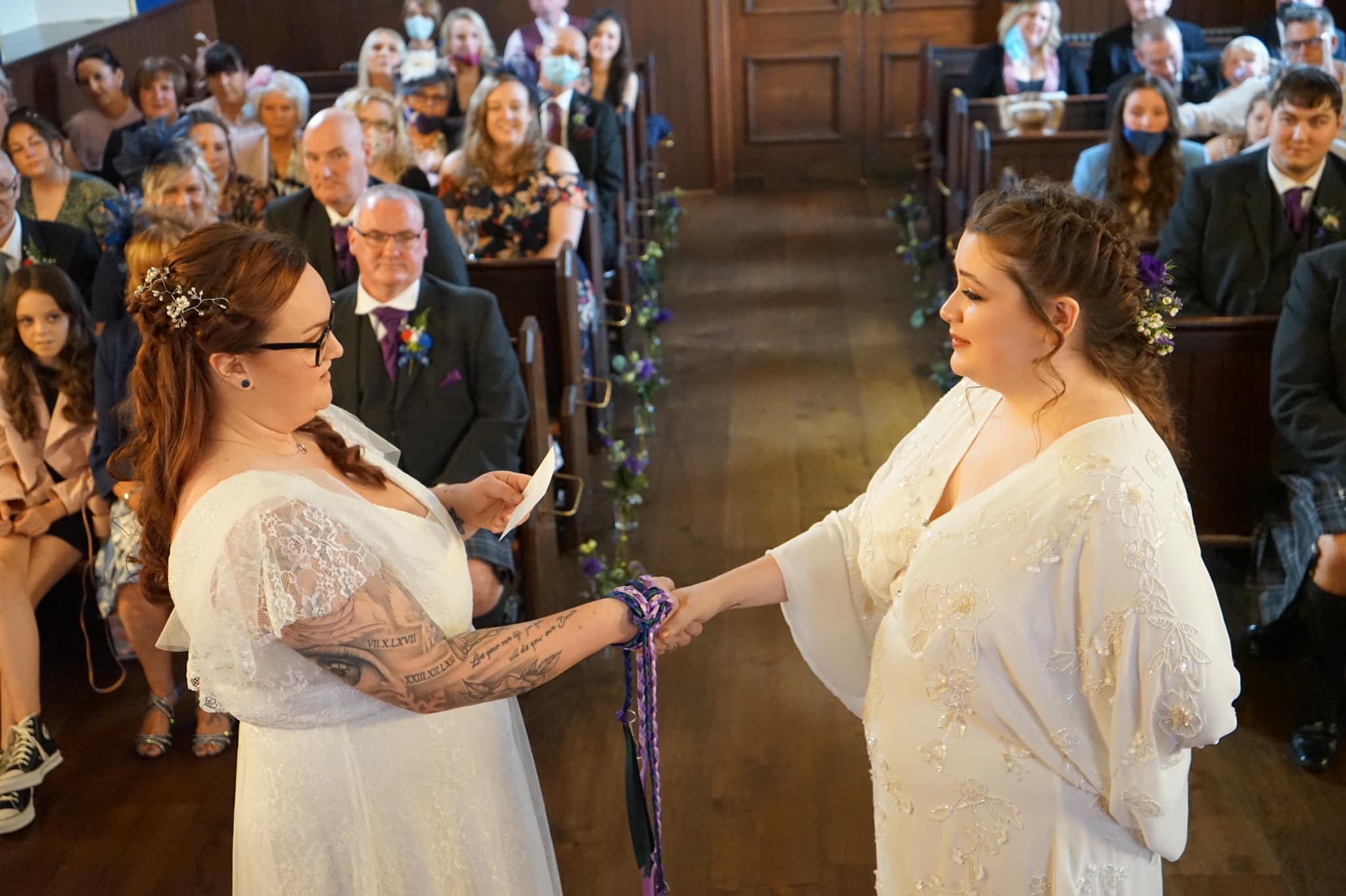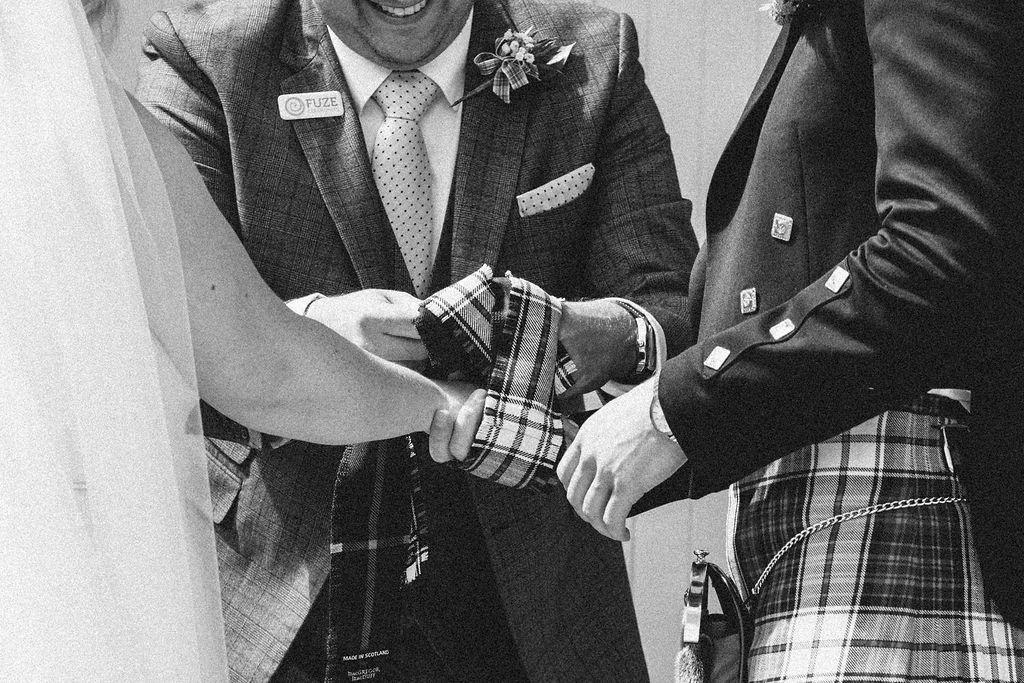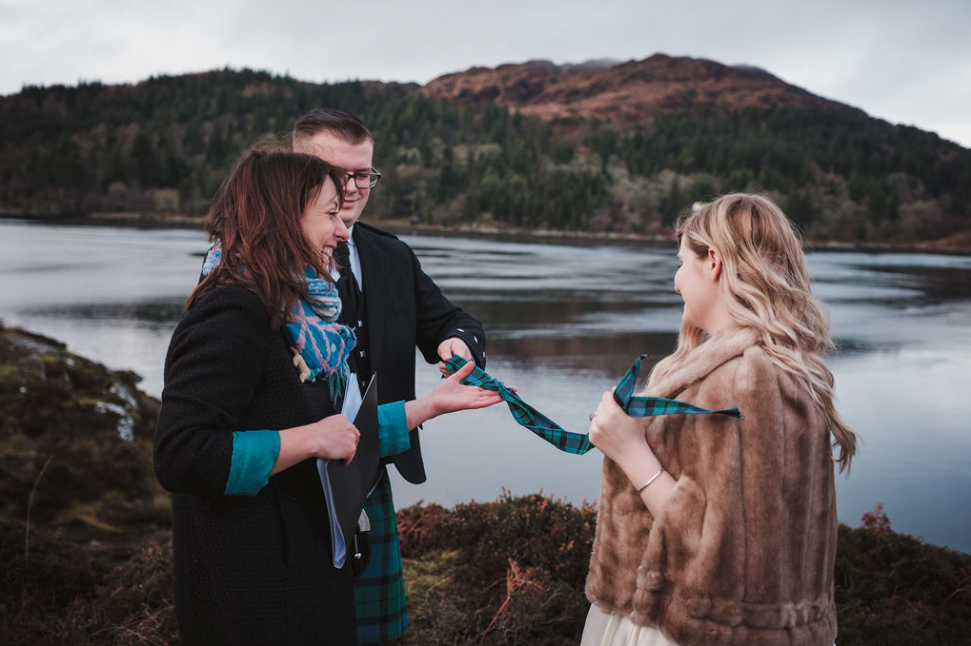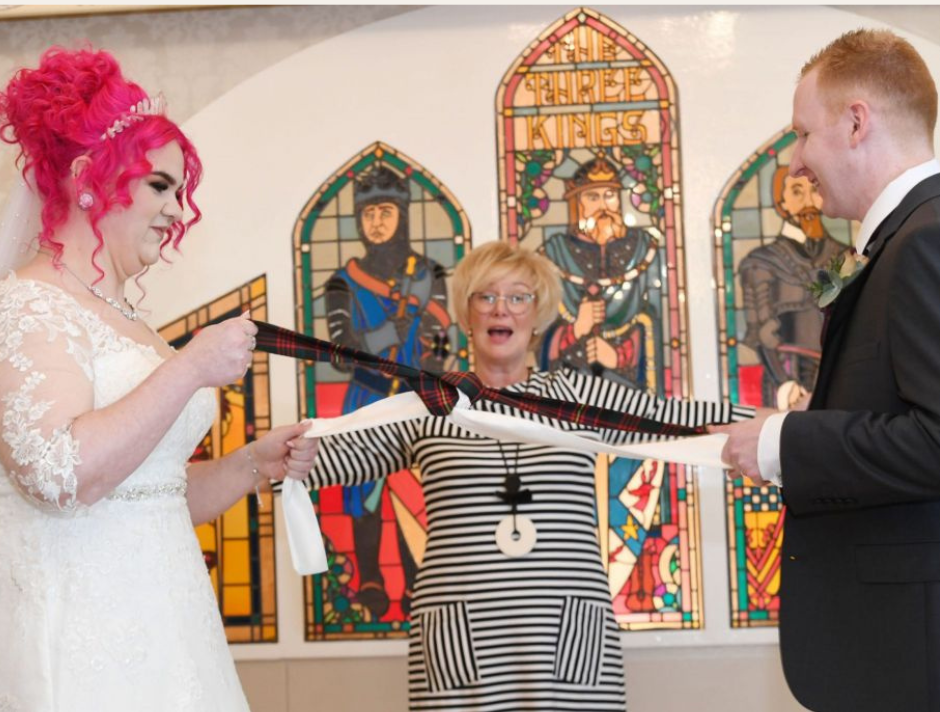A Meaningful Wedding Ceremony
The most wonderful thing about Humanist wedding ceremonies is the freedom to choose the way you want to celebrate yours and your partner’s commitment to one another. Long gone are the days where the wedding ceremony was the part guests just sat through to get to the drink’s reception – now the ceremony sets the tone for your special day, a pure celebration of the love you’ve found, and a joyous sharing with your family and friends of your journey together as a couple.
Including symbolic gestures is an interesting and engaging way to make your ceremony meaningful and unique. My personal favourite symbolic gesture is The Handfasting Ceremony because it is simple yet extremely moving; read on to learn all about it and why I love it so much.

Photo Credit: Nikki Sneddon Photography
What is a Handfasting Ceremony?
The phrases ‘tying the knot’, and ‘giving one’s hand in marriage’ are synonymous with getting married, but have you ever wondered how they came to be? Well, you guessed it – they originate from the Handfasting Ceremony – an ancient Celtic tradition dating back as far as 7000 B.C.! Couples would give one hand to be bound with their future spouse’s, by braided cord or ribbon to mark their engagement. It is a simple yet moving symbol of two people joining together; their lives and families intertwining and creating a bond through marriage (represented by the knot) that will last forever.
Over the thousands of years that have since passed, this symbolic gesture has been developed and incorporated into both religious and non-religious wedding ceremonies and practised by many different cultures all over the world. Incredible, isn’t it?
Since you can use an array of materials to ‘tie the knot’, such as ribbons, braided cords, tartans, trimmings of wedding attire, or sentimental pieces handed down through the family, the Handfasting ceremony brings together a wonderful combination of significance, tradition, and personalisation.

How can we incorporate the Handfasting into our wedding?
The Handfasting can be included in Wedding, Vow Affirmation and Vow Renewal ceremonies. It works best directly before, during, or after the vows are made.
Your celebrant wraps the cords/ribbons around yours and your partner’s joined hands and explains what the symbolic gesture represents, often along with a touching poem. If you want to involve your close friends or family in your ceremony, you could have them add their own cord to your handfasting or perform the reading that goes with it.
While your hands are still joined, you can exchange your vows and rings if you wish. Finally, you and your partner tie the knot and hold it up for all your guests to see (this makes a wonderful picture moment!).
Afterwards, the cords can be tied around a bouquet or laid across the top table for the remainder of the wedding day. The Handfasting cords look amazing in a shadow box, making a lovely keepsake to remember your special day by!
How many Handfasting cords or ribbons do we need?
The ceremony can be done with as few or as many cords as you like, though they are most commonly done with 2 cords – the idea is that one cord represents you and the other represents your partner, and that your lives are being tied together through marriage.
However, handfasting ceremonies can use 3 or even up to 6 cords – since multiple cords can be wrapped by close friends or family members (each cord representing their love and support for you) it is a great way to involve them in your big day and works especially well for blended families.
We find that the ideal length of cord/material is around 1.5m. If you’re using ribbons or cuts of material, a width of about 10cm is great!

Photo Credit: Silver Photography
How do we tie the knot?
As you can imagine, there are a variety of ways to tie handfasting cords or ribbons – your celebrant probably has one or two go-to methods, but if you have a preference, make sure you discuss this with them so that they can prepare accordingly.
To give you some ideas, here are my personal favourites – the celebrant does the trickier part of wrapping the cords, leaving you to tie the knot yourselves, which is really fun (and easy because the celebrant already did the hard part)!
As I mentioned before, you can use ribbons, cords, or cuts of material, but I’ll refer to ‘cords’ from now on for simplicity!
The Kiss/Saltire
A minimum of two cords are required (or an even number of cords).
You and your partner face each other, with one pair of wrists resting on the other’s forearms. One cord is laid over your wrists, and the second cord is laid over your partner’s.
You each take hold of the cord ends with both hands and pull away to tie the knot in such a way that the cords form a ‘kiss’ or ‘saltire’ shape. This looks lovely in pictures and can be a wee nod to Scottish heritage.
The Infinity Knot
Any number of cords can be used for this method.
You and your partner join one hand, leaving the other hand free (which you can use to exchange rings and vows with if you wish!).
The cords are wrapped around your joined hands by your celebrant/officiant, then you slip your hands away and use your other hand to tie the knot in such a way that you are left with an infinity knot, as the name suggests. A lovely way to symbolise ever-lasting love between you and your partner. And a wee nod to the nautical! The ‘kiss’ or ‘saltire’ shape can also be achieved by separating the cords with both hands – talk about versatility!
Is a Handfasting Ceremony right for us?
If you want to include a symbolic gesture that is simple yet moving and meaningful, then yes, absolutely! Like the idea of being connected to history and culture, yet have the freedom to inject your own style and personality into it? The Handfasting Ceremony will give you just that. Want to say that you literally tied the knot? Go for it!
Get in touch with your celebrant to plan the perfect ceremony for you and your fiancé.
Feature Image Credit: Joy Story




